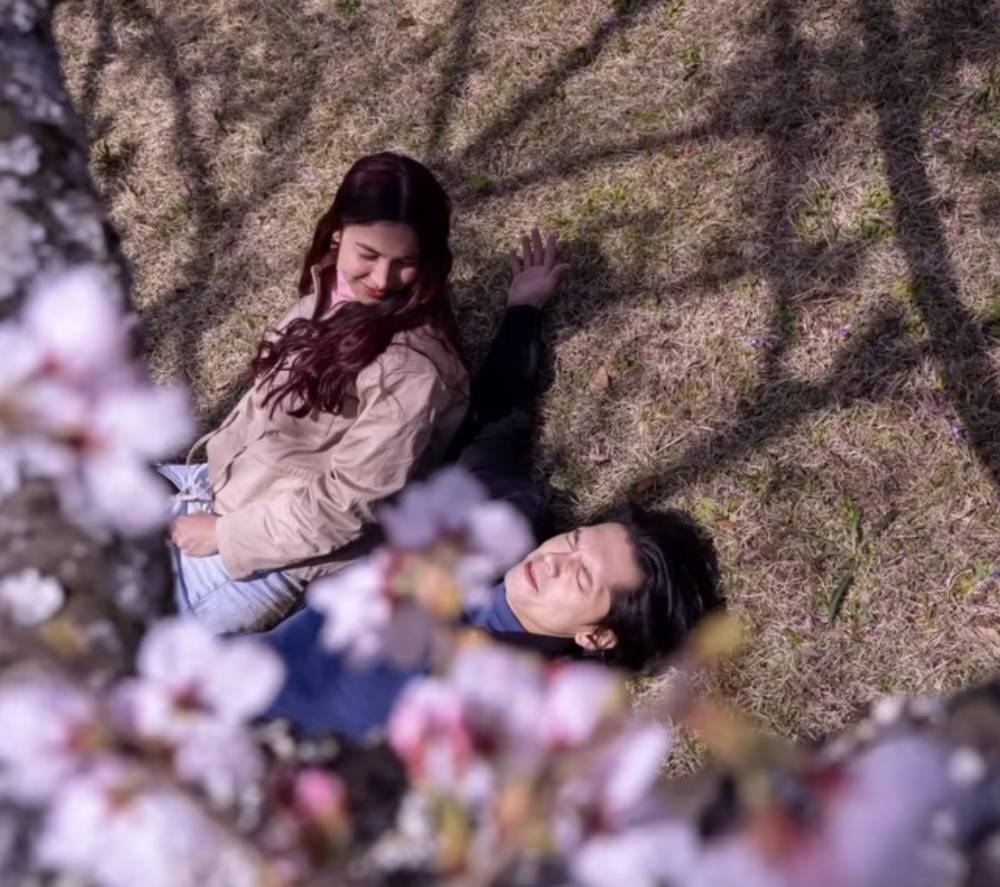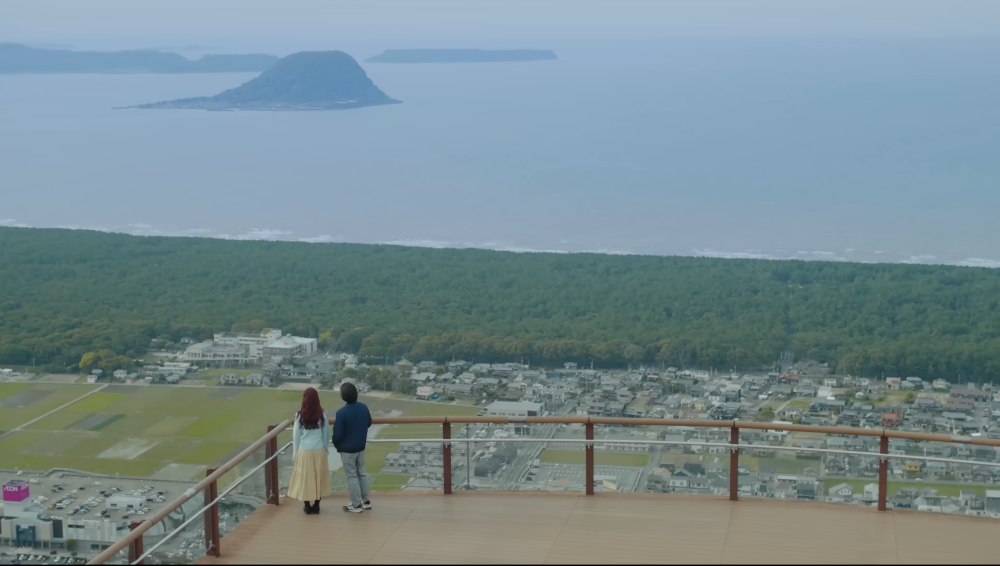A slice of Filipino romance in rural Japan

Japan has long been a beloved and sought-after shooting location among filmmakers around the world.
But while it’s convenient to go for the gleam and grunge of Tokyo’s organized chaos, or the staid charm of Kyoto’s historic core and landmarks, not all tales are meant to be told against a backdrop of popular tourist attractions.
Such was the case for the upcoming romantic fantasy film “Hold Me Close,” whose whimsical and poignant mood required an equally serene and unhurried setting.
Karatsu, located in the Saga Prefecture on the island of Kyushu, fit the bill. And so, in late March, director Jason Paul Laxamana and main stars Julia Barretto and Carlo Aquino booked a trip to the small coastal city at the western tip of Japan.

“Japan is one of my favorite countries to visit. I love the climate. I love their culture and how they’re able to balance the modern and the traditional. But I wanted to go beyond the skyscrapers or the vibrance of big cities like Tokyo. I wanted to show the quieter, more rural side of Japan,” Laxamana told Lifestyle.
An entry to this year’s 50th Metro Manila Film Festival, “Hold Me Close” (Viva Films, Ninuno Media) features a concept seemingly straight out of anime or manga.

A lone traveler Woody (Aquino) bumps into a local resident Lynlyn (Barretto) one dreary, rainy afternoon. And out of the blue, Lynlyn puts her hand over Woody’s cheek. Turns out, she has a special ability to sense and predict whether a new person will her bring joy or pain by way of touch.
They find themselves crossing paths every so often and spending more and more time with each other. And through it all, Lynlyn, much to her confusion, doesn’t feel anything at all. But right when she leasts expects it, she feels a jolt.

Visual culture
Shooting in Karatsu was made possible with the help of the Saga Prefecture Film Commission, a nonprofit public organization that gives grants to filmmakers interested in doing production work in Saga.
By highlighting what the prefecture has to offer, through movies, dramas, or online content, the organization hopes to revitalize touristic interest and establish “visual culture” in the region.
“I pitched the project to them and, thankfully, it was approved because the process is stricter these days,” related Laxamana, who had already shot a movie in Saga through the said initiative in 2019 (“Between Maybes,” also with Barretto).

“If the pitch gets green-lit, they will help you with the logistics and give you partial funding,” he added. “They will help you take care of the accommodation, they suggest possible filming spots, and provide a Japanese staff to help you in your way around.”
Karatsu, known for its local pottery and unique festivals, has its share of scenic attractions both natural and manmade—beaches and mountains, old castles, and bustling morning markets.
But Laxamana didn’t want the film to end up looking like a travelogue. That’s why he purposefully scouted locations that didn’t necessarily scream, “Hey, we’re in Japan!,” but still evoked the country’s essence.

“I’m not particular about the tourist spots. I try to look at things from the eyes of nontourists. If a place feels right, then I go for it. And the thing about Japan is that, even in the most normal-looking towns or villages, you will find something beautiful … a nice place that make you want to stay for a while,” he said.
True enough, in the movie’s full trailer, Barretto and Aquino are often show in nondescript alleyways, train stations, convenience stores, seaside docks, and machiyas—places locals wouldn’t even give a second look, but would likely make Filipinos stop on their tracks and whip their cameras out.
“Karatsu is such a peaceful calming place. Life is slower-paced. And that helps me at work because there are far fewer distractions,” Barretto told Lifestyle.
“Unlike busy Tokyo, where there are so many people walking about, Karatsu is indeed much quieter. There are no tall buildings; just small houses. And you can be truly get in touch with nature,” Aquino added.

Feeling of serendipity
That doesn’t mean, however, that the film completely eschewed scenes in more popular areas.
For the money shots, of course, they needed to capture and present high-impact visuals, which they found in the city’s canola fields, and Mt. Kagamiyama, a flat-top mountain that features a sprawling park and an observation deck that offers an expansive view of Karatsu Bay.
“We wanted to shoot a scene with the cherry blossoms, but the trees had yet to fully bloom that time. We looked for an alternative … It was then that we learned about the canola fields. The flowers grow just about anywhere and residents are used to seeing them. But it’s new to our eyes. And I loved it visually,” Laxamana said.

The cherry blossoms did bloom eventually. And what opportune timing it was, Barretto said, because it coincided with the shooting of Woody and Lynlyn’s happier moments together. “I was really excited to finally see the flowers in full bloom. It was such a fun day, probably the most memorable one of the trip,” Barretto said.
“I always visit Japan in December, so it was actually my first time seeing cherry blossoms in person. Seeing them open up, little by little as we went along, was so nice,” Aquino said.
And it’s perhaps this sense of wonder and unfamiliarity in a foreign land, Laxamana surmised, that makes a romantic movie even more romantic.
“The idea of meeting someone special outside the country, in a way, gives you a feeling of serendipity. Parang mas itinadhana,” Laxamana said.

















